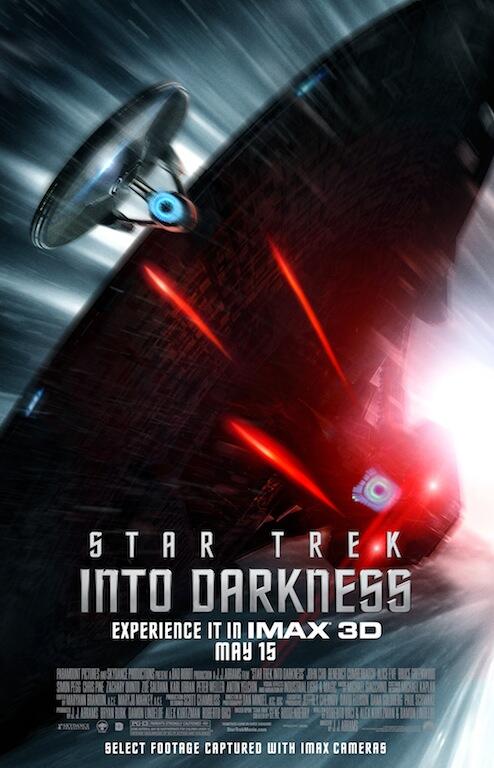In 2009 J.J. Abrams successfully messed with timelines and rebooted the flagging Star Trek franchise with a new origin tale of majestic style and extraordinary ambition. Four years later he has reassembled the crew for another jaunt into the unknown, but can he bottle lightning twice?”
Space, the final frontier…this journey of the starship Enterprise sees the crew on an M class pre-warp world with Kirk and Bones running for their lives from spear-toting locals and Spock, Uhuru and Sulu attempting to stop a volcano from destroying this beautiful red planet. When Spock’s live is endangered and Kirk must break protocol to save him it looks just like another day at the office for the United Federation of Planets’ flagship crew. But this is just the breathless beginning of a journey into darkness that will see them tested to their limits as they chase the terrorist John Harrison to the edge of the known universe.
One thing the first film nailed was the casting with Chris Pine as the cocky James T. Kirk, all bravado, charisma, and daring-do. Likewise the logical, emotional repressed, but still slightly on edge Spock was made for Zachary Quinto’s brand of poise and glaring. Karl Urban’s Bones was a standout offering subtle wisdom and dramatic heft as required. Zoe Saldana brought the beauty but also a razor-sharp wit and nerve to the solo female role. Anton Yelchin and John Cho were under utilised and Simon Pegg brought the humour and a great “bad Scottish accent” that rivaled James Doohan’s original. This time round all of them get more screen-time with Pine and Quinto benefitting most as the relationship between Kirk and Spock is brought front-and-centre. The pair bring believability to the frenemies turned best-buds story-arc, despite Quinto going a little too emo for a Vulcan…even a half-human one. The biggest let down last time out character wise was Eric Bana’s Nero, who through no real fault of the actor was weak and unworthy of true sci-fi villain status. Thankfully that has been fixed for Star Trek Into Darkness as Benedict Cumberbatch brings pathos and wondrous moral-duplicity to John Harrison, and more than holds his own on the physicality scale.
J.J. Abrams’ visual style on Star Trek has come in for ridicule in the intervening years, with his lens-flare fixation in particular being the focus of much web-based vitriol. It’s refreshing then to see him say “damn the criticism, this is my style for Star Trek”, and embrace the lens-flare. And the film is no less enjoyable for it, as the director adds long corridors of white and touch-screen visuals to contrast future technology against the blackness of space. The director has also embraced the IMAX format with a number of the key action sequences using the format and benefiting greatly from the increase in scope. The post-production 3D conversion is easily the best to date with many of the exterior space-based shot getting a dramatic increase in depth. Where the film gets itself into some trouble is in the third act pacing as the breathless rush of the first 2 acts cannot be sustained despite the directors best efforts. There’s plot-holes too that become even more obvious after leaving the cinemas, but while you are watching it you can’t help but be caught up in frantic pace and epic scale of it all. Composer Michael Giacchino is to be applauded for his formidable score, which manages to compete with the thumping sound-effects and bring an audible sweep to match the visual. The use of the TOS theme alone is a winner.
Star Trek Into Darkness is almost everything a Star Trek fan could hope for in a sequel, and has more than enough going for it to make non-fans interested too. If the plot-holes weren’t quite as large and if the pacing issue was resolved then we’d have a bonafide sci-fi classic on our hands. As it stands it’s a great piece of action cinema and marvellous way to spend 2 hours.

